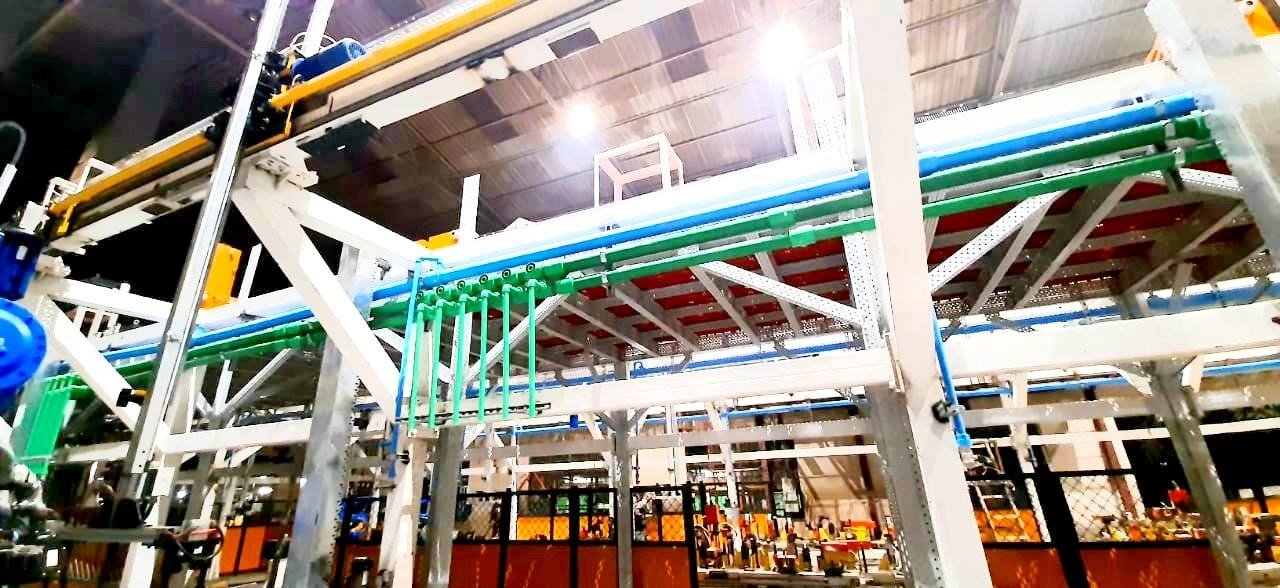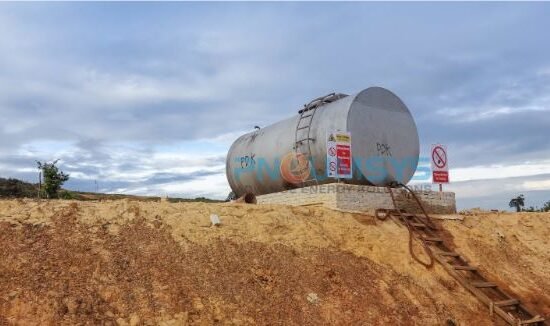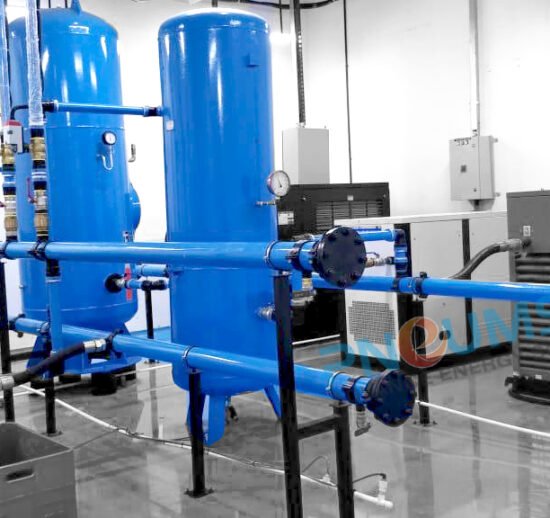It is too simplistic to consider PPR solely as a carrier of sanitary fluids such as drinking water, heating, water supply, and sewage, as new coextrusion technologies enable the production of pipes that can be used in particularly difficult conditions such as:
1) chemical attack from transported fluids – cooling towers or new generation biocide agents with a high percentage of chlorine;
2) high operating pressures;
3) high volumetric flow rates required for air-conditioning of buildings.
The Benefits of Using PPR Pipes for Drinking Water
PPR pipes are typically cylindrical and straight and constructed of polypropylene random copolymer plastic. They are lightweight, making them easy to travel, and are typically available in green and white. PPR pipes are also recognized for having thicker walls than PVC pipes. The PPR piping system includes fittings, valves, a fusing machine, and other accessories for all pipe sizes. They are non-toxic and safe to use, making them the finest choice for drinking water piping systems.
Smooth Inner Surface
PPR pipes have a particularly smooth inner wall or surface when compared to other traditional types of pipes. Because of their smooth walls, the pipes have no effect on frictional resistance. It also minimizes pressure during fluid transfer and distribution. PPR pipes, on the other hand, do not flake, unlike metal pipes, making them a safer choice for drinking water.
Long Term Service
We want a piping system that is safe, and we also want it to have a long service life. The PPR pipe system has been operational for almost 50 years and still has that large temperature range. It can tolerate hot temperatures while also enduring cold temperatures without cracking or breaking, resulting in water leaks.
Heat and Cold Resistance
PPR is intended to be a versatile potable water piping system that may be utilized in a variety of businesses, including hospitals and hotels. Furthermore, PPR piping systems have strong heat resistance and can withstand temperatures of up to 80 (and above) degrees Celsius. It can also tolerate freezing temperatures, making it ideal for installations in cold climates where other pipes are prone to damage and leakage. As a result, PPR is the greatest option for drinking water.
Non-Toxic
Toxic chemicals in our water supply endanger our health, while PPR pipes and fittings are constructed from non-toxic basic materials. As a result, it will not include any hazardous compounds that could harm the health of those who drink the water. It is not only safe for our bodies, but also for the environment. Because they are non-toxic, any manufacturing or installation of the PPR piping system will not result in pollution.
Overall, PPR pipes are safer and have more benefits than metal pipes, which is why they are appropriate for our drinking water. After all, we want our family to be both safe and healthy.
COPPER PIPELINE FOR FLUIDS & GASES FOR INDUSTRIAL APPLICATIONS
Copper and copper pipeline solutions for fluids or gases are the ideal material for plumbing, heating, gas, and renewable heating and cooling applications, thanks to modern technology that has drawn on the unique combination of properties of copper and copper alloys in the form of tube and pipe products.
The sophisticated copper piping solutions (water and drainage) meet the ASME/ANSI standards of the American Society of Mechanical Engineers.
Wrought and cast copper, and copper alloy pressure fittings are available in all conventional tube sizes up to 10-inch.
Furthermore, the availability of copper piping solutions serves to a variety of needs such as plumbing, heating, air conditioning, and fire sprinkler systems. In addition, the advanced piping solution is used in a few common contexts, such as piping infrastructure for drinking water and gas transport.
The most often used plumbing material, innovative copper pipeline fitting system provides the following advantages:
Probably the most widely-used plumbing material, advanced copper pipeline fitting solution offers the following benefits:
- It is highly reliable and time-proven due to its extreme tolerance to temperature volatility.
- High resistance: It can survive temperature and pressure fluctuations and can be exposed to UV radiation, temperature, and oxygen in outdoor conditions.
- Versatile: Copper tubes are utilized in a variety of products and services, including drinking water, traditional and radiant home heating, gas, medicinal gases, solar energy systems, fire sprinklers, and air conditioning systems.
- It meets safety criteria in an unrivaled range of temperatures and pressures.
- Energy conservation: Copper pipes are the ideal material for exchanging heat due to their outstanding thermal conductivity (or cold fluids). As a result, copper fitting solutions for radiant heating circuits are the most efficient.
- Recyclable: There is the possibility of recycling in the event of an unfortunate destruction with no loss of performance. As a result, the volume of waste at landfill is not grown, and mining resources are not exploited further.
- Healthy: Furthermore, plumbing tube is 99.90% copper and its composition will not change over time; it contains no additions, volatile organic compounds, or colours. Aside from that, it is the preferred material for transporting medical gases, such as pure oxygen, in hospitals.
- Stunning: Copper tube can be installed on the outside of a wall and, because to its appealing appearance, can even be used to create beautiful kitchen and bathroom accessories such as wall radiators.
- Versatile: Copper tube and modern copper fitting solutions are versatile and fulfill international requirements. They are accessible in a variety of markets and are an essential component of a comprehensive pipe work framework.
The Specifics of the Copper Pipeline Installation Method Typically, strength, formability, and other mechanical criteria influence the selection. What types can be utilized are governed by plumbing and mechanical codes.
Copper can be molded as requested on the job site due to its remarkable formability. A properly bent copper tube will not collapse on the outside of the bend and will not buckle on the inside.
Tests show that the bursting strength of a bent copper tube might be higher than it was before bending.
Because copper is easily formed, expansion loops and other bends required in an assembly may be fabricated fast and easily using the correct process and equipment.
However, the copper tube for underground water services or other underground piping applications can be installed using various installation methods:
- Impact molingImpact moling is a trenchless method for installing underground piping or conduit systems. A pneumatic machine attached to a steel piercing head (mole) releases a burst of air against the mole, which forces the mole into the dirt.
- The mole dimension may vary depending on the tooling used, however in most circumstances, the mole diameter is between 1¾ and 2⅜.”
- Open trenchingin the open As a result, open trenching is an excavation form of installation for underground plumbing solutions that has been the industry standard for many years.
- As a result, open trenching is an excavation form of installation for underground plumbing solutions that has long been the industry standard.
- Directional drilling or boringOn the surface, directional drilling or boring is a technique in which a wellbore, as they are commonly known, is installed along a predetermined lateral distance from a vertical or inclined starting site. To put it another way, this technology, also known as horizontal directional drilling, allows wellbores to be built along gradual curves rather than straight lines.
- Direct pulling:Shallow vibratory direct pulling may be an appropriate alternative for places and settings when installation of water service lines will not be hampered by low temperatures (freezing). Furthermore, the soil conditions must be suitable to vibratory plowing.
Shallow vibratory direct pulling may be an appropriate alternative in situations and circumstances when installation of water service lines will not be hampered by low temperatures (freezing). Furthermore, soil conditions must be favorable for vibratory plowing.





